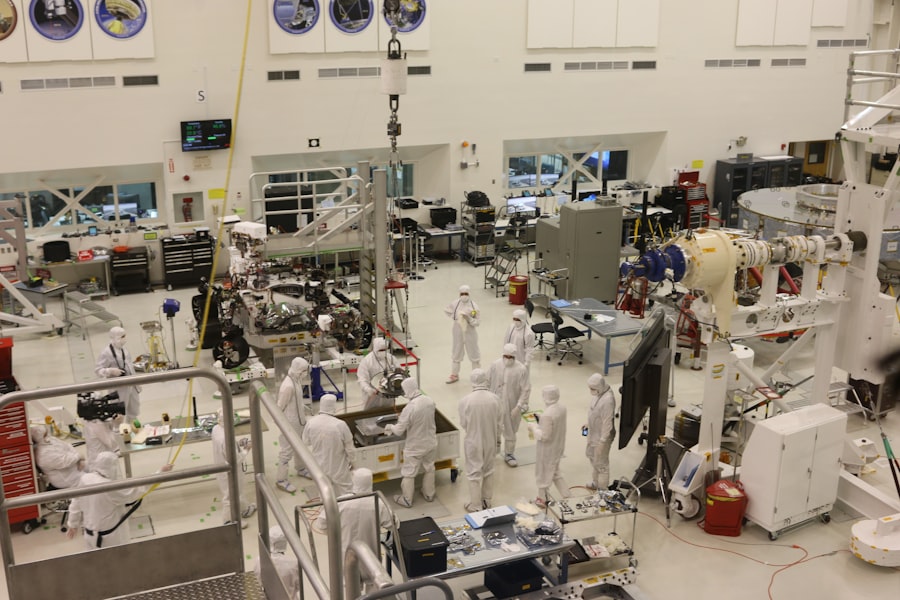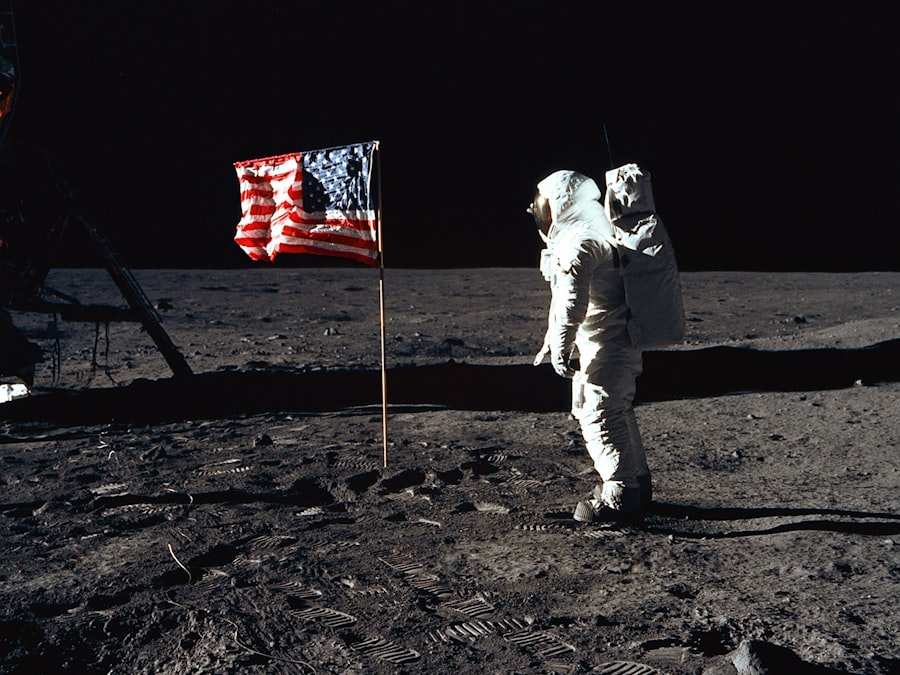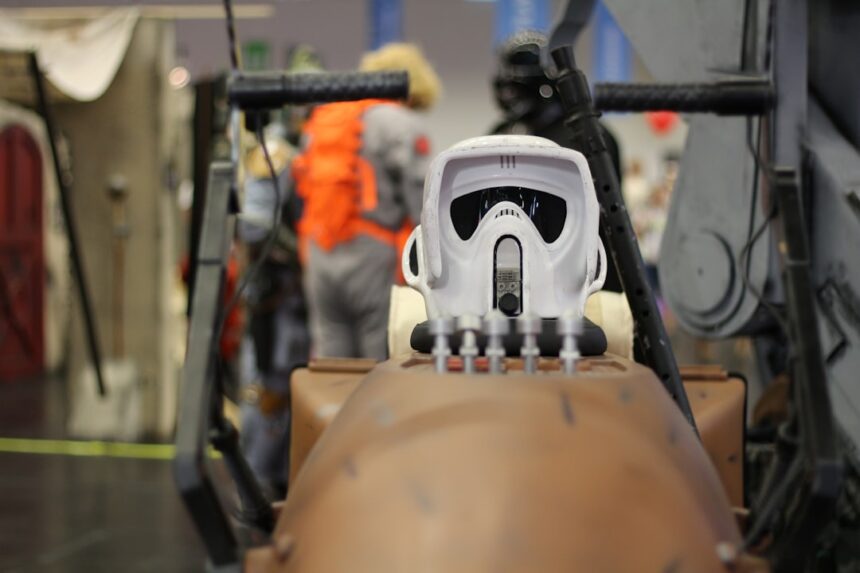The Cold War, a period of geopolitical tension between the United States and the Soviet Union, spanned from the end of World War II until the early 1990s. This era was characterized by ideological conflict, military rivalry, and a race for technological supremacy. As both superpowers sought to assert their dominance on the global stage, the competition extended beyond mere military might into the realm of science and technology.
The Space Race emerged as a significant front in this struggle, symbolizing not only technological prowess but also national pride and ideological superiority. The Space Race was fueled by a desire to demonstrate the capabilities of each nation. For the United States, showcasing advancements in space exploration was a way to validate its democratic ideals and capitalist economy.
Conversely, the Soviet Union aimed to prove that its communist system could achieve remarkable feats in science and technology. This competition led to groundbreaking achievements in space exploration, with each nation striving to outdo the other in a series of milestones that would capture the imagination of people around the world.
Key Takeaways
- The Cold War and the Space Race were fueled by political tensions between the United States and the Soviet Union, leading to a competition for technological and scientific superiority.
- The launch of Sputnik 1 by the Soviet Union in 1957 marked the beginning of the Space Race and heightened the rivalry between the two superpowers.
- The shock and response of the United States to the launch of Sputnik 1 led to increased funding for science and education, as well as the creation of NASA in 1958.
- The creation of NASA centralized the United States’ efforts in space exploration and led to significant advancements in technology and engineering.
- The race to the moon culminated in the historic Apollo 11 mission in 1969, when Neil Armstrong became the first person to set foot on the lunar surface, marking a major victory for the United States in the Space Race.
The Launch of Sputnik 1
On October 4, 1957, the Soviet Union achieved a monumental milestone by launching Sputnik 1, the world’s first artificial satellite. Weighing approximately 184 pounds and measuring about 22 inches in diameter, Sputnik 1 was a simple yet revolutionary device that orbited the Earth every 96 minutes. Its beeping radio signals marked a new era in human history, as it was the first time that humanity had sent an object into space.
The successful launch of Sputnik not only showcased Soviet technological capabilities but also sent shockwaves through the United States and the rest of the world. The implications of Sputnik’s launch were profound. It demonstrated that the Soviet Union had developed advanced rocket technology capable of delivering payloads into orbit, raising concerns about potential military applications.
The satellite’s presence in space signified that if the Soviets could launch objects into orbit, they could also potentially launch intercontinental ballistic missiles (ICBMs) capable of reaching American soil. This realization intensified fears of a nuclear threat and prompted urgent discussions within the U.S. government about national security and technological advancement.
The Shock and Response of the United States

The launch of Sputnik 1 sent shockwaves through American society, igniting a sense of urgency and fear among policymakers and citizens alike. The initial reaction was one of disbelief; many Americans had assumed that their nation was at the forefront of technological innovation. The realization that the Soviet Union had achieved such a significant milestone before the United States led to widespread panic and introspection.
This event marked a turning point in American attitudes toward science and education, as it became clear that the nation needed to invest more heavily in research and development. In response to this perceived threat, the U.S. government took immediate action to bolster its space program.
President Dwight D. Eisenhower established the National Aeronautics and Space Administration (NASA) in July 1958, signaling a commitment to advancing American space exploration efforts. Additionally, educational reforms were implemented to promote science and mathematics in schools, aiming to cultivate a new generation of scientists and engineers who could compete with their Soviet counterparts.
The launch of Sputnik thus served as a catalyst for change, reshaping American priorities in education and technology.
The Creation of NASA
| Event | Date | Significance |
|---|---|---|
| National Aeronautics and Space Act | July 29, 1958 | Established NASA as a civilian agency responsible for coordinating America’s activities in space. |
| First Human on the Moon | July 20, 1969 | Neil Armstrong became the first person to set foot on the moon during the Apollo 11 mission. |
| Space Shuttle Program | April 12, 1981 | First launch of the Space Shuttle Columbia, marking the beginning of a new era in space exploration. |
| Hubble Space Telescope Launch | April 24, 1990 | Deployment of the Hubble Space Telescope, providing unprecedented views of the universe. |
The establishment of NASA marked a pivotal moment in American history, as it consolidated various existing space-related programs under one umbrella organization dedicated to civilian space exploration. NASA’s creation was not merely a bureaucratic move; it represented a strategic response to the challenges posed by the Soviet Union’s advancements in space technology. With a clear mandate to lead the nation in space exploration, NASA quickly set ambitious goals that would inspire both scientists and the general public.
In its early years, NASA focused on developing rocket technology and conducting scientific research related to space travel. The agency’s first major project was Project Mercury, which aimed to send humans into space and safely return them to Earth. This initiative laid the groundwork for future manned missions and established NASA as a leader in space exploration.
The agency’s commitment to innovation and collaboration attracted some of the brightest minds in science and engineering, fostering an environment where groundbreaking ideas could flourish.
The Race to the Moon
As the Space Race progressed, the ultimate goal for both superpowers became clear: landing humans on the Moon. In 1961, President John F. Kennedy famously declared that America would land a man on the Moon before the end of the decade, setting an ambitious timeline that galvanized public support for NASA’s efforts.
This declaration not only underscored America’s determination to win the Space Race but also served as a rallying cry for national unity during a time of social upheaval. The Apollo program was launched as NASA’s response to Kennedy’s challenge, encompassing a series of missions designed to achieve lunar landing capabilities. Apollo 11, which successfully landed astronauts Neil Armstrong and Buzz Aldrin on the Moon on July 20, 1969, became a defining moment in human history.
Armstrong’s iconic words as he stepped onto the lunar surface—”That’s one small step for [a] man, one giant leap for mankind”—resonated around the globe, symbolizing not only American achievement but also humanity’s collective aspirations for exploration and discovery.
The Impact on Education and Technology

The Space Race had far-reaching effects on education and technology in both the United States and beyond. In response to perceived deficiencies in scientific knowledge and technical skills among American students, educational reforms were implemented to emphasize science, technology, engineering, and mathematics (STEM) subjects. Schools began to prioritize these fields, leading to an increase in enrollment in science courses and encouraging students to pursue careers in engineering and technology.
Moreover, advancements made during the Space Race spurred innovation across various industries. Technologies developed for space exploration found applications in everyday life, leading to breakthroughs in fields such as telecommunications, materials science, and computer technology. For instance, satellite technology revolutionized global communication systems, while innovations in materials led to improved safety standards in aviation and automotive industries.
The legacy of these advancements continues to shape modern society, underscoring how competition can drive progress.
The Space Race and International Relations
The Space Race significantly influenced international relations during the Cold War era. As both superpowers sought to assert their dominance through technological achievements, their rivalry extended beyond national borders into diplomatic arenas. The competition for supremacy in space became intertwined with broader geopolitical strategies, affecting alliances and shaping foreign policy decisions.
The launch of Sputnik not only heightened tensions between the United States and the Soviet Union but also prompted other nations to reassess their positions within this new global landscape. Countries around the world began investing in their own space programs or forming partnerships with either superpower to gain access to advanced technologies. This dynamic created a complex web of alliances and rivalries that would shape international relations for decades to come.
The Legacy of the Space Race
The legacy of the Space Race is multifaceted, encompassing achievements in science and technology as well as cultural shifts within society. The successful Moon landing not only marked a triumph for NASA but also represented a significant victory for American ideals during a time of intense rivalry with the Soviet Union. It inspired generations of scientists, engineers, and dreamers who sought to push boundaries and explore new frontiers.
Furthermore, the Space Race laid the groundwork for international cooperation in space exploration. In subsequent decades, nations began collaborating on projects such as the International Space Station (ISS), demonstrating that shared goals could transcend political differences. The spirit of exploration fostered during this era continues to influence contemporary efforts in space research and exploration.
The Space Race and Pop Culture
The Space Race permeated popular culture during its height, capturing public imagination through various forms of media. Movies, television shows, books, and music reflected society’s fascination with space exploration and its heroes. Iconic films like “2001: A Space Odyssey” explored themes of human evolution and artificial intelligence against a backdrop of space travel, while television programs like “Star Trek” envisioned a future where humanity ventured beyond Earth.
Moreover, astronauts became cultural icons, celebrated not only for their bravery but also for their role as pioneers in human exploration.
This cultural phenomenon helped solidify space exploration as an integral part of American identity during this transformative period.
The Space Race and Women in STEM
While much attention has been given to male astronauts during the Space Race era, women played crucial roles behind the scenes that often went unrecognized. Female mathematicians, engineers, and scientists contributed significantly to NASA’s success through their expertise in various fields. Notable figures such as Katherine Johnson, Dorothy Vaughan, and Mary Jackson broke barriers within a male-dominated industry, demonstrating exceptional talent and determination.
The visibility of women in STEM fields during this time laid important groundwork for future generations seeking careers in science and technology. Their stories have gained recognition over time, inspiring young women to pursue their passions despite societal challenges. The legacy of these trailblazing women continues to resonate today as efforts persist to promote gender equality within STEM disciplines.
The Space Race and Future Exploration
As humanity reflects on the achievements of the Space Race era, it becomes evident that this period laid essential foundations for future exploration beyond Earth. The technological advancements made during this time have paved the way for contemporary missions aimed at exploring Mars, asteroids, and beyond. Organizations like NASA continue to build upon lessons learned from past endeavors while fostering international collaboration for ambitious projects such as returning humans to the Moon through Artemis missions.
Looking ahead, humanity stands on the brink of new frontiers in space exploration—one that promises not only scientific discovery but also potential colonization efforts on other celestial bodies. As nations unite under shared goals for sustainable exploration practices, they honor the legacy established during the Space Race while embracing opportunities for cooperation that transcend borders. In conclusion, while rooted in competition between superpowers during an era defined by ideological conflict, the Space Race ultimately transformed human understanding of what is possible beyond our planet—an enduring testament to innovation driven by ambition and curiosity about our universe.
The true start of the space race is often debated, but many historians point to the launch of the Soviet satellite Sputnik 1 on October 4, 1957, as the pivotal moment that ignited the competition between the United States and the Soviet Union. This event marked the beginning of a new era in space exploration and technological advancement. For a deeper understanding of the geopolitical tensions and technological innovations that characterized this period, you can read a related article on the topic by visiting In The War Room. This resource provides valuable insights into the historical context and significance of the space race’s inception.
WATCH THIS! 🪖How Stolen Nazis Built Cold War Power
FAQs
What was the true start of the space race?
The true start of the space race can be traced back to the end of World War II and the beginning of the Cold War between the United States and the Soviet Union.
When did the space race officially begin?
The space race officially began on October 4, 1957, when the Soviet Union successfully launched the world’s first artificial satellite, Sputnik 1, into orbit around the Earth.
What impact did the launch of Sputnik 1 have on the United States?
The launch of Sputnik 1 by the Soviet Union shocked and alarmed the United States, leading to a renewed emphasis on science, technology, and education. This event also prompted the U.S. to accelerate its own space exploration efforts.
What were some key milestones in the early years of the space race?
Some key milestones in the early years of the space race include the launch of the first human-made object to reach the Moon (Luna 2) by the Soviet Union in 1959, and the first human spaceflight by Soviet cosmonaut Yuri Gagarin in 1961.
How did the space race ultimately end?
The space race ultimately ended with the United States achieving the goal set by President John F. Kennedy to land a man on the Moon and return him safely to Earth. This goal was accomplished on July 20, 1969, with the Apollo 11 mission.




